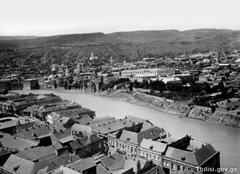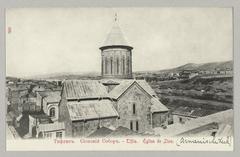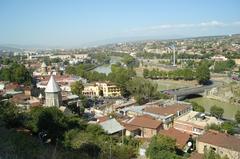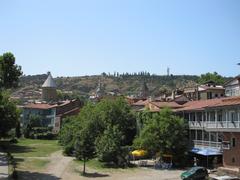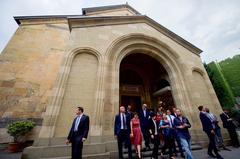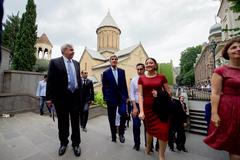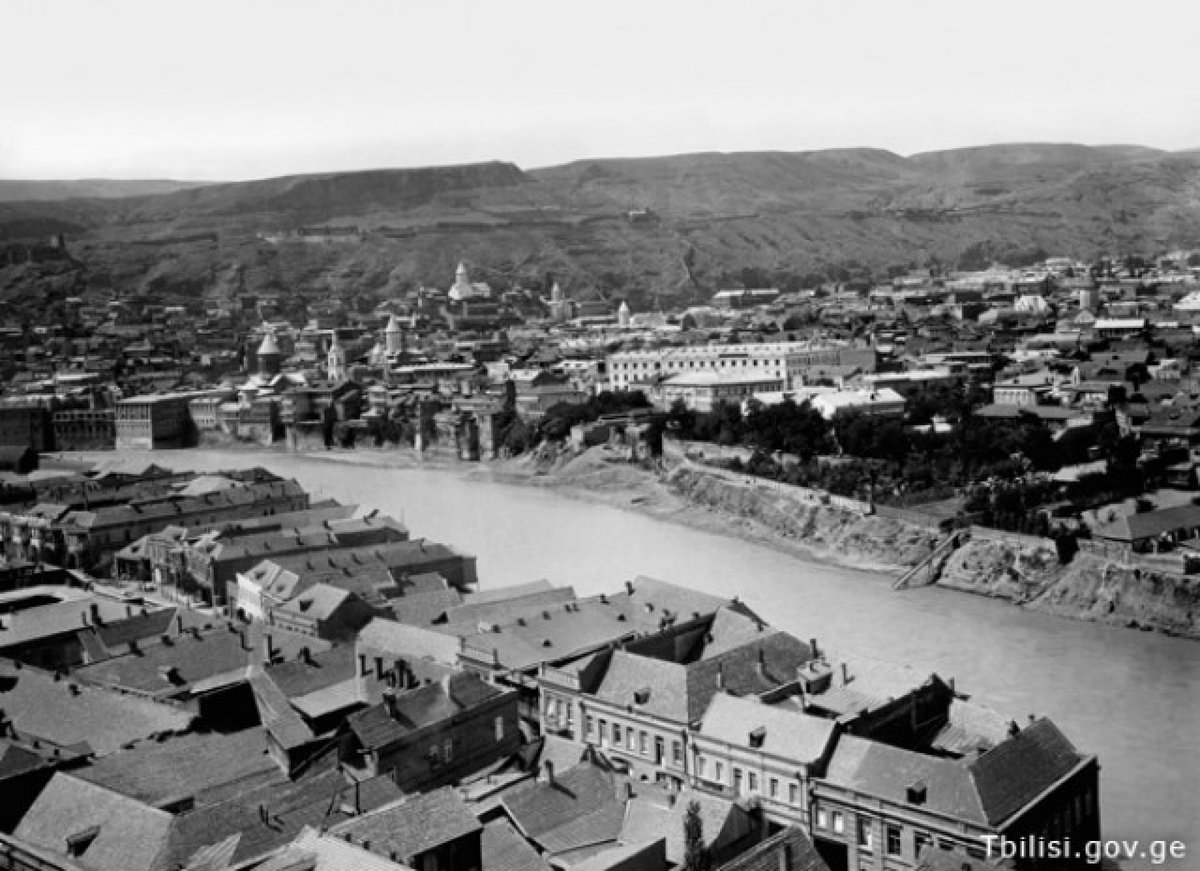
Visiting Tbilisi Sioni Cathedral: Hours, Tickets, and Historical Site Guide
Date: 14/06/2025
Introduction
Nestled in the heart of Tbilisi’s Old Town, the Sioni Cathedral of the Dormition (commonly called Tbilisi Sioni Cathedral) stands as a remarkable testament to Georgia’s enduring religious, architectural, and cultural legacy. Dating back to the 6th century and attributed to King Vakhtang I Gorgasali, the founder of Tbilisi, this spiritual landmark has witnessed centuries of devotion, destruction, and renewal. Named after Mount Zion in Jerusalem, Sioni Cathedral symbolizes the deep spiritual connection between Georgia and the Holy Land (Live the World; SpottingHistory).
With its distinctive cross-in-square plan, ornate stonework, and revered relics—most notably the Cross of Saint Nino—the cathedral is a centerpiece for both pilgrims and cultural travelers. This guide offers in-depth insights into Sioni Cathedral’s history, architecture, practical visitor details, and tips to enhance your experience in one of Georgia’s most celebrated religious sites (Lonely Planet; Georgia Travel).
Table of Contents
- Historical Overview
- Visitor Information
- Architectural and Artistic Features
- Frequently Asked Questions (FAQ)
- Conclusion and Final Tips
- References and Further Reading
Historical Overview
Origins and Early History
Sioni Cathedral’s origins trace back to the late 5th or early 6th century, commissioned by King Vakhtang I Gorgasali. The site has always been dedicated to the Dormition of the Virgin Mary, maintaining this spiritual focus through multiple reconstructions following wars and natural disasters (Live the World). The cathedral’s very name—“Sioni”—emphasizes its symbolic connection with Mount Zion in Jerusalem, reflecting Georgia’s aspirations as a bastion of Christianity in the Caucasus (Mexico Historico).
Architectural Evolution
The cathedral has endured countless invasions and reconstructions. The current structure predominantly dates to the 13th century, following earlier buildings destroyed by Arab, Persian, and Mongol incursions. Later restorations in the 17th to 19th centuries layered Byzantine, Persian, and Russian influences onto its medieval Georgian core. The stone iconostasis, crafted in the 1850s by Russian general and artist Knyaz Grigory Gagarin, is a notable example of this eclectic heritage (Live the World; Mexico Historico).
Religious and Cultural Significance
Until the construction of the Holy Trinity Cathedral in 2004, Sioni Cathedral served as the main seat of the Georgian Orthodox Church (Georgian Holidays). It houses the Cross of Saint Nino—a grapevine cross bound with the saint’s hair, a powerful emblem of Georgia’s conversion to Christianity in the 4th century. The cathedral remains a focal point for major religious ceremonies, enthronements, and feasts, embodying Georgian resilience and faith (Food and Travel Utsav).
Visitor Information
Location and Accessibility
Situated at 3 Sioni Street in Tbilisi’s Old Town, the cathedral is easily accessible on foot from city landmarks like the Bridge of Peace, Shardeni Street, and the Tbilisi History Museum. Public transport options include Liberty Square metro station (about a 10–15 minute walk) and various bus routes. The area is lively, well-lit, and safe (Wikipedia; Georgian Travel Guide).
While the cathedral is centrally located, note that its historic pathways and steps may pose challenges for those with mobility impairments. Assistance is available upon request, but ramps and elevators are not present due to the protected status of the architecture.
Opening Hours and Entry
- Standard Hours: Open daily, typically from 8:00 AM to 8:00 PM. Some sources list slightly shorter hours (9:00 AM to 6:00 PM); check ahead during major Orthodox holidays (Holidify).
- Entry: Free of charge; donations are welcomed.
- Guided Tours: Available through local tour operators and at the cathedral entrance by arrangement. Tours provide historical, architectural, and religious context.
Dress Code and Visitor Etiquette
As an active house of worship, Sioni Cathedral maintains traditional Georgian Orthodox customs:
- Dress Modestly: Cover shoulders and knees; women are encouraged to wear skirts or dresses and cover their heads (scarves are usually provided).
- Quiet and Respectful Behavior: Silence is expected during services. Avoid disruptive photography or use of flash.
- No Food or Drink: Consumption inside the church is not permitted.
Guided Tours and Special Events
Guided tours are highly recommended for deeper appreciation of the cathedral’s history and relics. Special religious festivals—particularly the Assumption of the Virgin Mary, Christmas, and Easter—are marked by elaborate liturgies and processions. Participation is an opportunity for unique cultural immersion, though expect larger crowds and restricted access during these times (Georgia Travel).
Nearby Attractions
- Narikala Fortress: Panoramic city views and ancient fortifications.
- Metekhi Church: Another iconic riverside church.
- Shardeni Street: Bustling with cafes, galleries, and artisan shops.
- Tbilisi History Museum: Exhibits on the city’s past.
- Anchiskhati Basilica: The oldest surviving church in Tbilisi.
Architectural and Artistic Features
Exterior and Structural Details
Sioni Cathedral exemplifies the cross-in-square plan, with a central dome supported by four pillars. The structure is built from yellow tuff stone from Bolnisi, and Algeti stone, giving the façade a distinctive golden hue. Bas-relief carvings on the western façade depict crosses and a chained lion (a symbol of vigilance), while angelic and saintly figures adorn the northern walls. Sixteen arched windows are framed with intricate stonework (Wikipedia; Nobility.pro).
The dome, resting on a tall drum (tholobate), showcases advanced medieval engineering and was reinforced with helm-shaped arches in the 16th century.
Interior Decoration and Relics
Inside, the cathedral is richly decorated with frescoes and icons, especially from 19th-century restorations led by Grigol Gagarin. The iconostasis features traditional Georgian grapevine motifs, and the current version reflects late 20th-century efforts to restore indigenous aesthetics (Nobility.pro).
The most sacred relic is the Cross of Saint Nino, displayed behind a bronze lattice to the left of the iconostasis. Other treasures include the Grace Stone of St. David Garejeli and, by some accounts, the skull of Apostle Thomas (MyGeoTrip).
Bell Towers and Complex Layout
The cathedral complex, enclosed by a stone fence, includes two bell towers: a three-tiered structure from 1425 and a newer tower at the main entrance—both rebuilt multiple times after damage (Georgian Travel Guide; Nobility.pro). The grounds offer a peaceful courtyard amid the bustling Old Town.
Frequently Asked Questions (FAQ)
Q: What are the opening hours of Tbilisi Sioni Cathedral?
A: Generally 8:00 AM to 8:00 PM daily, but hours may change for holidays.
Q: Is there an entry fee?
A: No, entry is free though donations are encouraged.
Q: Are guided tours available?
A: Yes, on-site and through local tour operators.
Q: Is photography allowed inside?
A: Usually, but without flash and not near sacred relics or during services.
Q: Is the cathedral accessible to people with disabilities?
A: Some access limitations exist due to historic steps and uneven floors; assistance is available upon request.
Conclusion and Final Tips
Tbilisi Sioni Cathedral is a living monument to Georgia’s spiritual and architectural heritage. Its enduring cross-in-square design, artistic treasures, and role as a center of Orthodox worship make it a highlight of any visit to Tbilisi. Plan your visit for early morning or late afternoon to avoid crowds, respect local customs, and consider combining your trip with nearby historical attractions for a full Old Town experience.
For up-to-date information on visiting hours, special events, and guided tours, consult the official Tbilisi tourism website and Georgian National Tourism Administration. Download the Audiala app for curated travel content, guided tours, and maps to enrich your journey through Georgia’s captivating capital.
References and Further Reading
- Live the World
- SpottingHistory
- Georgian Holidays
- Lonely Planet
- Georgia Travel
- Wikipedia
- Holidify
- Georgian Travel Guide
- Nobility.pro
- MyGeoTrip
- Food and Travel Utsav
- Official Tbilisi Tourism Site
- Georgian National Tourism Administration
